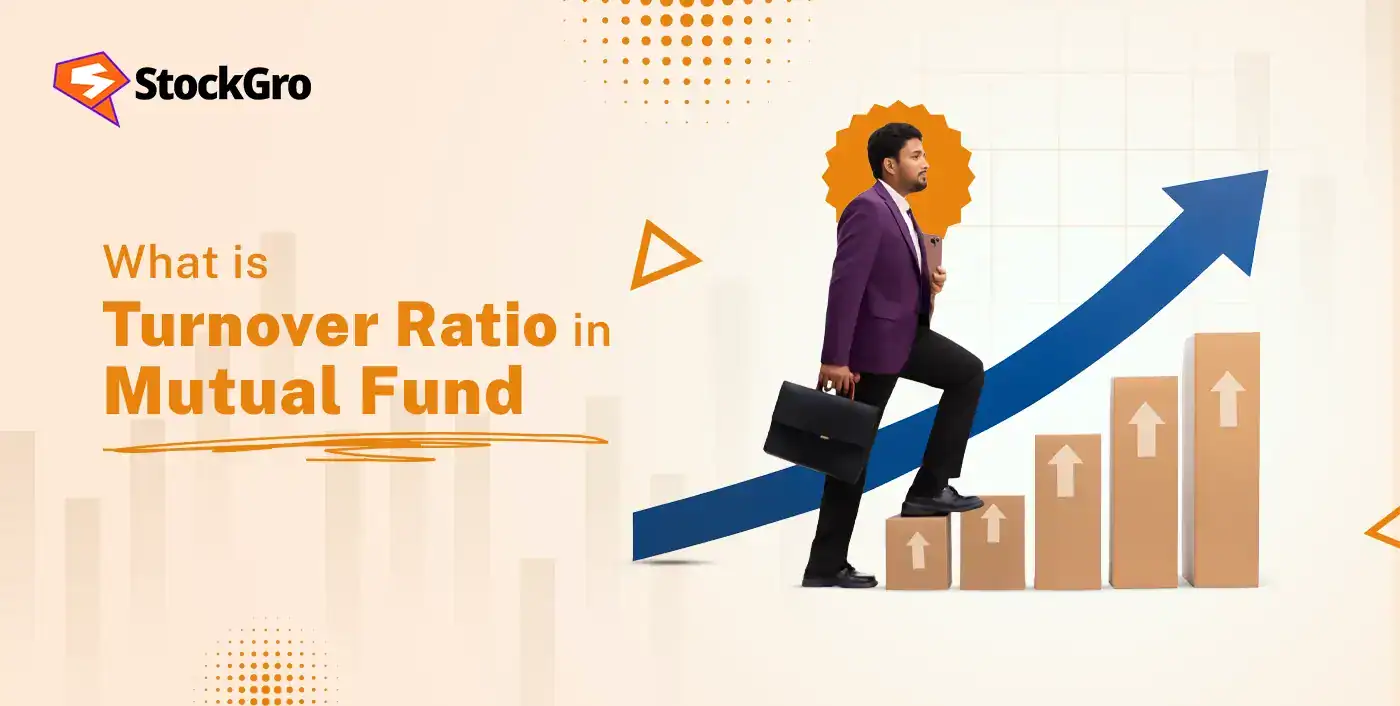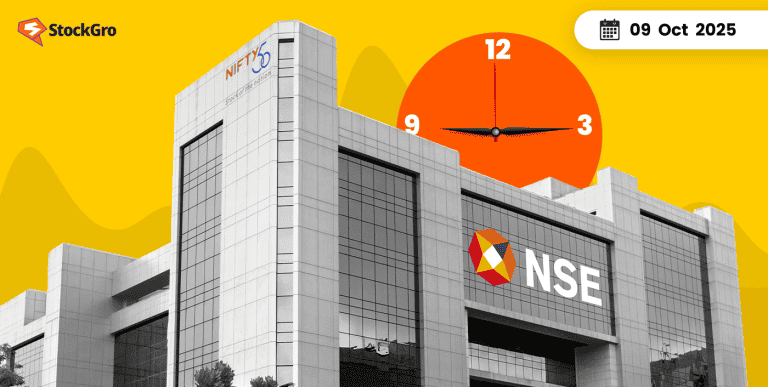
Is it wise to compare two funds that have similar returns, are in the same mutual fund category, and invest in similar types of assets? Generally, yes. But there’s one important ratio that must be considered here. Yes, we are talking about a turnover ratio in a mutual fund.
Plenty of funds report a turnover ratio of more than 100%, some even go beyond 500%. What is a turnover ratio in a mutual fund? What is the logic behind such high turnover ratios? How to interpret a turnover ratio in a mutual fund? Answer these and other questions by reading this blog in the next few minutes.
What Is Turnover Ratio in Mutual Fund?
Turnover ratio in mutual funds measures the frequency of buying and selling within the fund’s portfolio in a given timeframe. Specifically, a portfolio turnover ratio signifies how often a mutual fund manager trades the portfolio’s assets. The higher the turnover ratio, the more active the trading.
Often, investors ignore this metric while comparing mutual funds. However, this could prove to be a crucial comparison to draw, as a higher turnover ratio may signify higher hidden costs and potentially higher risk.
How Is Turnover Ratio Calculated?
A mutual fund’s turnover ratio is calculated as follows:
Portfolio Turnover Ratio = (The Lesser number of Securities Bought or Sold) / Average Net Assets Under Management (AUM) × 100
Let us consider an example,
Suppose a mutual fund bought ₹290 Crores worth of securities in one year. It sold off ₹300 Crores worth of securities in the same period. The Average AUM of the fund is ₹1700 Crores. Let’s see what its portfolio turnover ratio looks like using the above formula:
Portfolio Turnover Ratio= ₹290 Crores/₹1700 Crores * 100 = 17%
Typical Turnover Levels (Passive vs Active Funds)
Both active and passive funds differ in their investment approach. While active funds are aimed at beating their benchmarks by undertaking an active trading approach, passive funds aim to mimic the exact performance of their benchmark by passively investing in the same manner as them. This is the key to understanding the typical turnover levels for these categories of funds.
- Active funds frequently buy and sell assets as per the fund manager’s discretion. Therefore, active funds may observe a higher portfolio turnover ratio.
- Passive funds do not frequently rebalance their portfolios as they follow the index they track. This suggests that their portfolio turnover ratio is typically lower than that of active funds.
Let’s look at a few active vs passive fund turnover ratios:
| Fund name | Turnover Ratio (%) |
| JM Large Cap Fund (Active) | 220.7% |
| Mirae Asset ELSS Tax Saver Fund (Active) | 107% |
| Mahindra Manulife Midcap Fund (Active) | 60% |
| DSP Nifty 50 Index Fund (passive) | 7% |
| Nippon India ETF Nifty 100 (passive) | 14% |
*As of August 31, 2025
Why Turnover Matters: Costs, Tax, Strategy Insight
As stated above, portfolio turnover ratio matters. Here’s why:
- Costs: Transacting frequently incurs costs that may increase the investor’s burden. These costs ultimately reduce the fund’s returns.
- Tax: Selling off securities attracts capital gains tax. Each time a fund sells a security, they are paying tax on it, the burden of which will be transferred to the investor. This also reduces the investor’s returns.
- Strategy insights: A high portfolio turnover ratio indicates that the fund uses an active trading strategy. Investors can determine if this aligns with their investment goals and accordingly make investment decisions.
Low Turnover vs High Turnover: What It Signals
- A low turnover ratio implies that the fund deploys a buy-and-hold strategy. This means the fund does not engage in frequent trading and rebalancing of securities in its portfolio. This also indicates lower associated costs and tax burdens.
- A high turnover ratio indicates that the fund is engaged in active trading of securities in its portfolio. This also implies that there could be additional costs and tax implications passed to the investor.
Use Cases: When High Turnover Is Justified
Typically, a high turnover ratio is often considered a ‘red flag’. Yet, in some cases, the fund may do well with a high turnover ratio. Let’s check these cases:
- Trading during market volatility: During periods of market uncertainty, active fund managers may indulge in aggressive trading of securities to navigate market risk. In such cases, having a high turnover ratio is acceptable, despite the higher costs.
- Thematic or sectoral funds: Sectoral and thematic funds are associated with high risks and market volatility. Therefore, these funds are typically associated with high portfolio turnover ratios, which help manage their risk.
- Short-term price movements: Funds may rely on short-term pricing fluctuations to capture market inefficiencies, which may increase the portfolio turnover ratio of the fund.
- Tactical funds turnover: Tactical asset allocation funds have a higher turnover ratio as they move allocation between different securities as and when the market fluctuates.
- Dynamic funds: The Dynamic strategy turnover ratio remains high as they keep fluctuating between different asset mixes to capitalise on market trends.
Limitations & Cautions
Here are some limitations of the portfolio turnover ratio in a mutual fund:
- Profitability not measured: The turnover ratio only guides investors about the number of trades incurred, not their profitability or losses.
- Use in conjunction: The turnover ratio is an indicator of the trading frequency of a mutual fund, and it is ideal to use in conjunction with other metrics when making comparisons across funds.
- Overlooks the purpose behind more trades: Another drawback is that a turnover ratio signifies the frequency of trades and not the purpose behind them.
Conclusion
A turnover ratio in a mutual fund is a notable measure of the fund’s trading activity. A high turnover ratio is associated with higher costs and tax implications, but may suggest market-beating, trend-capturing, and volatility-shielding for the fund.
FAQs
The turnover ratio in a mutual fund is measured using the following formula:
Portfolio Turnover Ratio = (The Lesser number of Securities Bought or Sold) / Average Net Assets Under Management (AUM) × 100.
Typically, there is no specified good or normal turnover ratio. However, passive funds usually have a low portfolio turnover ratio. Active funds, on the other hand, have a high turnover ratio.
A high turnover ratio is associated with higher costs and tax implications. Frequently buying and selling securities will incur trading and brokerage fees. Additionally, selling off securities attracts capital gains tax, which adds to the costs for an investor.
A high turnover ratio is associated with higher costs and tax implications. Frequently buying and selling securities will incur trading and brokerage fees. Additionally, selling off securities attracts capital gains tax, which adds to the costs for an investor.
Typically, funds such as passive or index funds have a very low turnover ( 0-10%), as they mimic the benchmark they follow. These benchmark indices rebalance semiannually or annually, which significantly reduces the frequency of trades in passive funds.
Yes. A high turnover ratio is often associated with a higher short-term capital gains tax, which is higher than the long-term capital gains tax in most cases.

